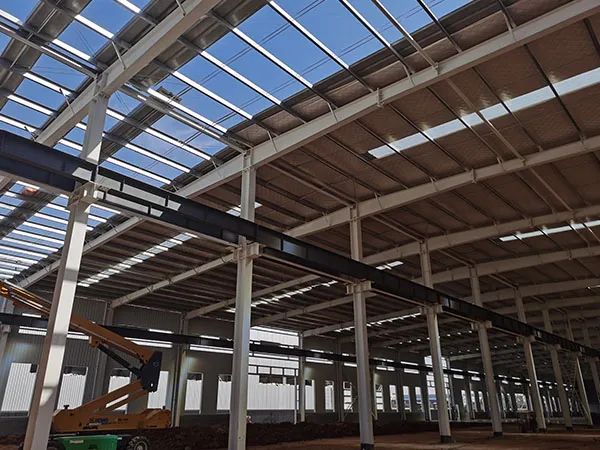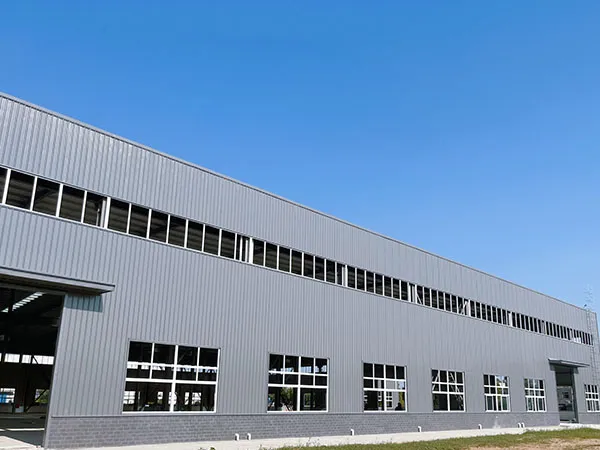The cost of a steel structure factory is influenced by a wide range of factors, encompassing everything from initial design and construction to ongoing operations and market dynamics.
Steel Structure Factory Price Influencing Factors

Design and Engineering:
Complexity of Design: Simple rectangular buildings are cheaper than complex designs with irregular shapes, multiple spans, mezzanines, or specific architectural features.
Building Size and Height: Larger area and greater eave height directly increase material and labor costs.
Load Requirements: Heavy loads (e.g., from overhead cranes, heavy equipment, snow, wind, seismic activity) necessitate stronger, heavier, and thus more expensive steel members and foundations.
Span Length: Longer clear spans (without internal columns) require larger, heavier steel members.
Engineering Fees: Fees for architects, structural engineers, and other consultants.
Building Codes and Standards: Compliance with local, national, and international building codes can influence design complexity and material specifications.
Material Costs:
Steel Price: The market price of raw steel is a major variable and can fluctuate significantly.
Type and Grade of Steel: Higher strength steel or specialized alloys (e.g., for corrosion resistance) are more expensive.
Quantity of Steel: Directly related to the size and design complexity.
Cladding and Roofing Materials: Options range from basic metal sheets to insulated panels, impacting cost and energy efficiency.
Doors, Windows, and Openings: Type, size, quantity, and quality (e.g., industrial roll-up doors vs. standard personnel doors).
Insulation: Type and thickness of insulation for walls and roof.
Fasteners and Connections: Bolts, welds, and other connection materials.
Coatings and Finishes: Paint, galvanizing, or other protective coatings for corrosion resistance and aesthetics.
Fabrication Costs:
Labor Costs: Wages for welders, fitters, machine operators, etc.
Workshop Overhead: Rent, utilities, maintenance of fabrication equipment.
Complexity of Fabrication: Intricate cuts, welds, and connections take more time and skill.
Quality Control and Testing: Non-destructive testing (NDT) and inspections.
Transportation of Fabricated Members: Distance from fabrication shop to construction site and size/weight of members.
Construction and Erection Costs:
Site Preparation:
Land Acquisition: Cost of the land itself.
Geotechnical Survey: To determine soil conditions, impacting foundation design.
Grading and Excavation: Leveling the site.
Foundation Work: Concrete foundations (type and size depend on soil and loads) are a significant cost.
Labor Costs for Erection: Skilled erectors, crane operators, riggers.
Equipment Rental: Cranes, man-lifts, scaffolding, etc.
Erection Complexity: Difficult site access, tight working conditions, or complex member assembly can increase time and cost.
Safety Measures and Equipment: Compliance with safety regulations.
Project Management and Supervision: On-site management costs.
Location Factors:
Geographic Location: Labor rates, material availability, and transportation costs vary significantly by region.
Site Accessibility: Easy access for large trucks and cranes reduces costs.
Local Regulations and Permitting: Fees for permits, impact fees, and compliance with local zoning and environmental regulations.
Availability of Utilities: Cost to connect to power, water, sewer, and gas.
Factory-Specific Requirements (Beyond the Basic Structure):

Overhead Cranes and Hoists: Rails, supporting structures, and the cranes themselves.
Specialized Flooring: Reinforced concrete, epoxy coatings, or specific requirements for machinery.
MEP (Mechanical, Electrical, Plumbing): HVAC systems, process piping, electrical distribution for machinery, lighting, fire suppression systems.
…
More detailed information about the factors affecting the cost of steel structure factory can be found by visiting: https://www.meichensteel.com/a/news/steel-structure-factory-cost-influencing-factors.html


